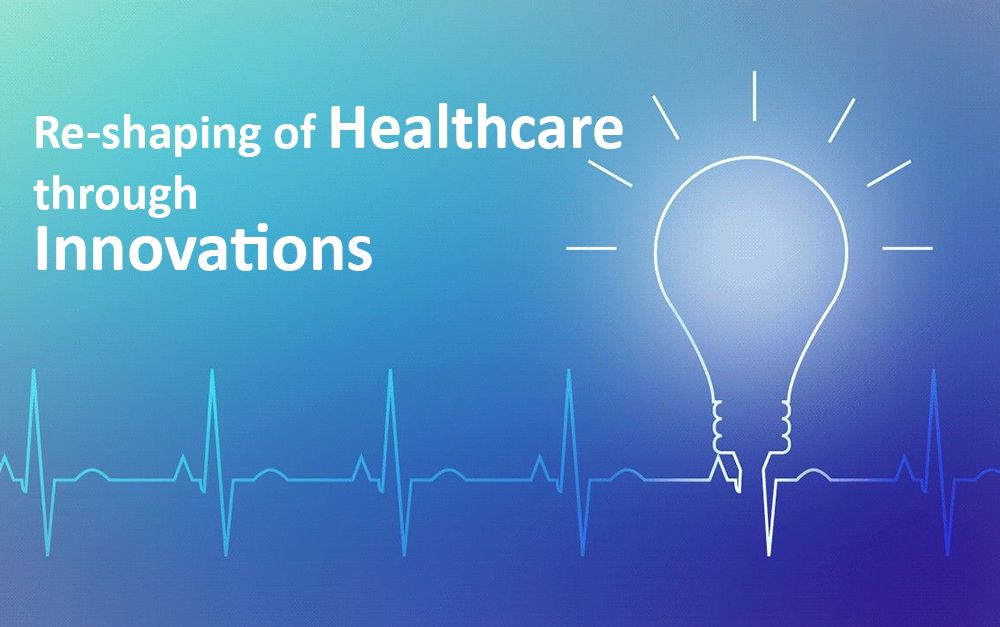[vc_empty_space]
The World economy is changing drastically from agriculture to manufacturing to services. Among all services, healthcare services are one of the significant contributors to the economic growth. Further, it has become easy to implement due to advances in information and communication technologies (ICT ), Internet of Things (IoT), efficient network of organisations. IoT is a network of organisations based on their complementarity strengths / resources available. IoT is connecting homes, cars cities as never before to make life simple and more comfortable [1].
Innovations has become critical capability of many business organisations including healthcare organisations. New technologies such as Internet of Things (IoT), nano technology, semiconductor products, stem cells, genetic engineering are driving the healthcare across the world. Among all, medical sciences have advanced significantly in terms of adopting latest technologies throughout the process of care delivery. Innovations in healthcare industry primarily aimed at improving quality of life, life expectancy, treatment options and cost efficiency.
Healthcare Innovation can be defined as the introduction of a new concept, idea, service, process, or product aimed at improving treatment, diagnosis, education, outreach, prevention and research and with the long term goals of improving quality of life, safety, outcomes, efficiency and costs [2].
There are several innovations happened in healthcare delivery. Some of these are given below (figure 1):
• Product innovation
• Process Innovation
• Service design Innovation
• Service delivery Innovation
• Business model Innovation
Innovations in healthcare improves adaptation and affordability.
Product Innovation is concerned with introduction of new types of goods and services for the external markets. This includes significant improvements in technical specifications, components and materials, software, user friendliness or other functional characteristics. Examples include wearable devices, portable ECG of GE, Intra Ocular lens of Aravind Eye Hospital, Jaipur foot etc. These innovations help in generating incremental revenues [2]. Some of the main products include patient monitoring devices, home care and health and fitness. Wearable devices market is growing at the rate of 4.8% on year-on-year growth [3].
Process Innovation is mainly implementation of a new or significantly improved production or delivery method. This includes significant changes in techniques, equipment and/or software. These innovations help in improving internal capabilities and quality improvement [2]. Some of the examples include use of computerisation of medical records, improvement in the use of medical equipment like in Aravind Eye Hospital where surgical equipment is being used for two tables.
Service Design Innovation mainly focus on design of man-machine system compatibility including customisation of devices and its functioning. For example, customising the pulse rate of pacemaker implanted to a patient. Examples include telemedicine, mobile healthcare units, small clinics in the vicinity of patients, collaboration with other stakeholders etc. Figure 3 shows
Service Delivery Innovation include the use of new methods in delivering the service and helps in cost reduction as well as turnaround time of care delivery. This include innovation in medication, surgical interventions, procedure etc.
For example, use of iphone for taking picture of eye and checking for preliminary diagnosis in place of a computer or other equipment. MRI, CT Scan, Cataract surgery etc. Figure 4 shows arrangement of eye check-up equipment on a two wheeler which can reach to the location where four wheeler mobile unit cannot reach.
Apart from these four innovations, one of the most important one is business model innovation. This is mainly focuses on number of alternatives and pricing of products and services. Examples include offering two or three options for surgical services along with other support services like room with air conditioner or without air conditioner etc. Providing enough number of winning alternatives refers to business model innovation.
Diffusion of innovations in healthcare requires acceptance of innovations by the different stakeholders mainly the care receivers (patients), care givers (doctors and others). This requires alignment of knowledge, technology and institutionalisation of practices. Innovations in healthcare helps government to provide conducive environment for innovation and collaboration opportunity between public and private organisations. Facilitate in implementing healthcare initiatives in large scale by optimising resources and their deployment.
References:
1. S rivastava S C and Shainesh G (2015), Bridging the service divide through digitally enabled service innovations: Evidence from Indian Healthcare service providers, MIS Quarterly, Vol 39(1), pp: 245-267.
2. O machonu V K and Einspruch N G (2010), Innovations in Healthcare delivery systems: A conceptual framework, The Innovation Journal: the public sector innovation journal, vol. 15(1), pp: 1-20.
3. http://www.todaysmedicaldevelopments.com/article/wearable-medical-devices-2016-market-72816/
https://www.innovation.cc/scholarly-style/omachonu_ healthcare _3innovate2.pdf
About the author
S Venkat is an Associate Professor in Operations Management at IIM Lucknow, India. His interests include healthcare operations management, affordable healthcare design for bottom of the pyramid consumers, Managing operations in religious organisations etc.

